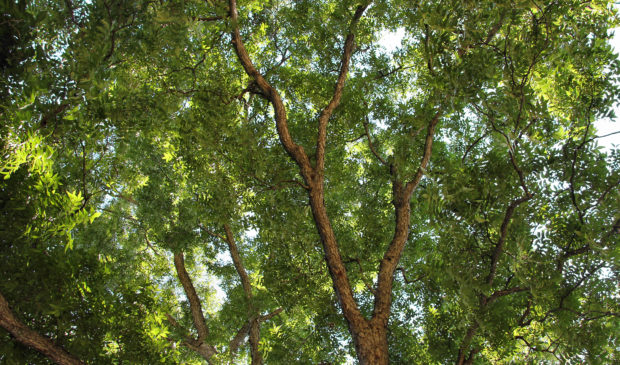Development Services has a full plate managing environmental concerns
Wednesday, December 8, 2021 by
Willow Higgins The Development Services Department briefed the Environmental Commission last week on some of the work it has been doing to improve environmental protections on construction sites. The DSD is in charge of regulating tree protection measures as well as inspecting control measures that prevent sediment runoff and erosion caused by rainfall. While DSD inspects construction throughout all of Austin, it directs its focus to the Zilker neighborhood, where most complaints come from, in an effort to protect the local springs.
Commissioner Richard Brimer asked about the reporting channels for members of the public to make complaints about suspected environmental violations at construction sites. Brimer had a personal experience trying to make a complaint via 311 about a heritage tree that was scheduled for removal. The dispatcher he spoke to wasn’t aware of the ordinance protecting heritage trees, but he was given an email address to make the complaint. By the time his concern was addressed, the tree – which turned out to be dead – had already been cut down.
Brimer asked if there was an effort to educate the general public about making complaints and what DSD’s turnaround response time is. David Chapman, an environmental compliance supervisor with DSD, explained that DSD can be contacted by 311, email or phone for complaints. DSD staffers visit the sites of most complaints within 24 hours, and while they try to visit all of their routine inspections in addition to complaints, because of the current staffing shortage,the department is making about 80 percent of routine inspections. DSD does public outreach to neighborhoods and homeowners associations about complaint reporting channels, but in the coming months increased outreach is on its list of to-dos.
“What I’m looking for is a really aggressive attempt to get out to the public the method by which you contact the city to address these problems so that they can be adequately reported,” Brimer said.
Commissioners also asked about the types of erosion and sediment control measures used on construction sites. There are three types of approved control measures that help manage pollution from construction in the event of a rainstorm, but the city is also piloting “innovative design” controls that might help mitigate some of the issues seen with approved measures. For example, some costly controls are often run over by construction trucks, which can damage or ruin the control. One new measure being piloted addresses that issue.
“I’m sort of concerned with the problems that we’ve had presented with it and the fact that it’s not an approved use,” Commissioner Pam Thompson said. “I really think that the process for approving these things has been studied a lot, and I find (their use) very disconcerting.”
But Chapman said the use of unapproved controls are being monitored, and their function is being evaluated so that they can weigh their pros and cons and push the design measure through the approval process if it turns out to be effective.
“We just want to make sure that we’re doing the most that we can to make the biggest impact for the environment and for the citizens of the city of Austin,” Chapman said. “Without trying new controls, we can’t say we’re doing everything for them. These controls have their benefits that we’re using. The ones that are approved have benefits, but they also have downfalls too.”
In a city growing as quickly as Austin, Chapman says their job isn’t to completely halt all development. “We’re trying to make the environment great and keep the environment that Austin has, but also working with the development community too. And Austin’s a hotbed for development right now. So it’s a difficult spot to be an environmental guy, (overseeing) the environmental section.”
Photo by Larry D. Moore, CC BY-SA 3.0, via Wikimedia Commons.
The Austin Monitor’s work is made possible by donations from the community. Though our reporting covers donors from time to time, we are careful to keep business and editorial efforts separate while maintaining transparency. A complete list of donors is available here, and our code of ethics is explained here.
You're a community leader
And we’re honored you look to us for serious, in-depth news. You know a strong community needs local and dedicated watchdog reporting. We’re here for you and that won’t change. Now will you take the powerful next step and support our nonprofit news organization?








